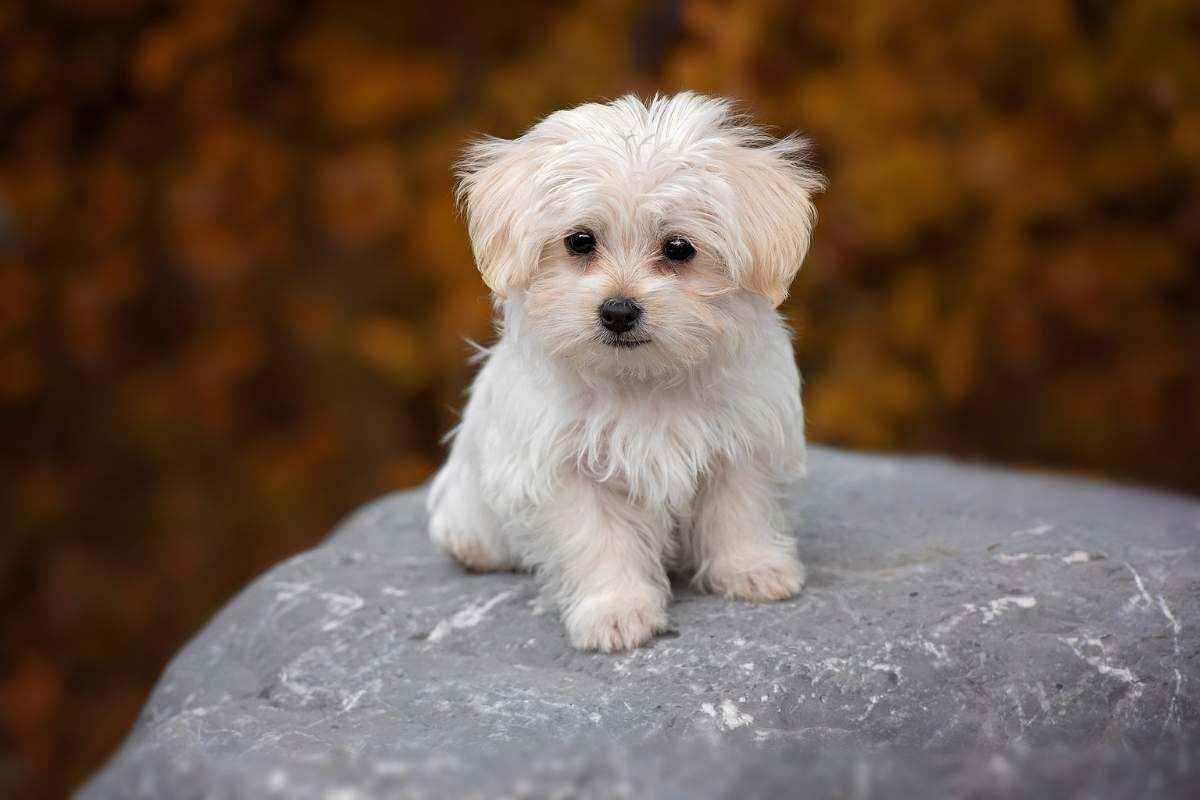Maltese dogs a quintessential lap dog with soft, fluffy white fur and sparkling black eyes. This canine breed has many unique characteristics and is renowned for its poise and elegance, making it adored by many pet owners all over the world. Originally from the Mediterranean Basin, these dwarf canines have graced the laps of royalty for centuries and make great companions for anyone looking for unconditional love and loyalty.
Read on below to learn more about this incredibly affectionate breed, and discover if this cute, cuddly dog is the perfect pet for you.
17 Characteristics of Maltese
Let’s explore the physical and behavioral characteristics as well as personality traits of the Maltese breed.
1. They Have Small and Sturdy Bodies
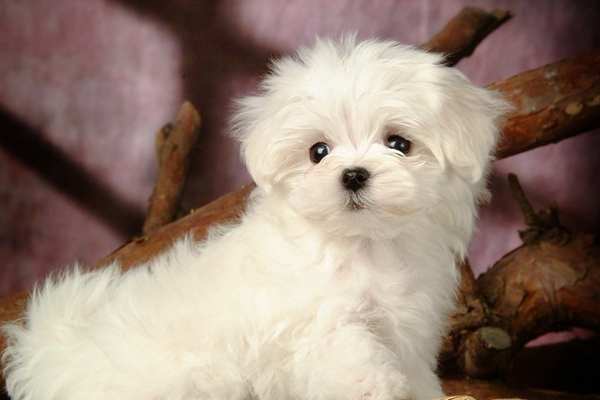
Physically, these dogs are small, sturdy, and muscular, with compact bodies and short legs. The male dogs have an average height of 8-10 inches at the shoulders, while the females are slightly shorter, measuring 7-9 inches in height.
These little canines typically weigh anywhere from 4 to 8 pounds, making them one of the smallest dog breeds in the world! Thanks to their tiny build, these dogs are quite agile and can move quickly if needed.
2. They Have Soft White Fur
This breed is best known for its silky, beautiful, white, right fur that flows in luxurious waves from its neck to the tip of its tail, reaching all the way to the ground. Unlike other dog breeds, these tiny lap dogs don’t have an undercoat, and they don’t shed much.
While their fur is usually white, some may have a brownish tint to their fur due to sun exposure. They are also prone to dirt, stains, and matting, so regular grooming is essential to keep their fur looking its best.
3. They Have Black Eyes

Maltese have beautiful, large, round black eyes framed by long lashes. Their eyes are always alert and full of life, ready to take in the world around them.
Some of these dogs may have lighter-colored eyes with a hint of brown, while others may have an intense brown color. Their dark-colored eyes are quite captivating, often standing out against their all-white coat.
4. Gumdrop-Shaped Black Nose
The nose is one of the distinguishing features of its beloved little face. This particular breed has a black nose, usually quite round in shape, and its size will vary depending on the individual dog’s lineage.
In some cases, their noses may have pink skin beneath them, appearing like a lighter shade, almost beige-like. This peculiar attribute is present only in certain dogs but makes each one just a bit more unique than the other! Hybrid or mixed breeds may also inherit this trait from their lineage.
5. Round-Medium-Sized Head

Maltese have a head of medium length, precisely proportional to its body size. Their skull is slightly rounded on top, with a moderate stop visible.
Its muzzle tapers in a gentle curve from top to bottom, meeting with the facial skin neatly along the jawline before dropping down towards the neck. Its eyes are set wide apart and are dark in color – giving it an expressive appearance.
6. Droppy, Heavily-Feathered, Low-Set Ears
Maltese have quite large ears for their size, though not overly so. These are set low and hang down in a droopy fashion, framing their face beautifully. They are heavily feathered with long hair, which gives them a softer look and can sometimes hide their ears from plain sight.
7. High-Set, Plume-Like Tail
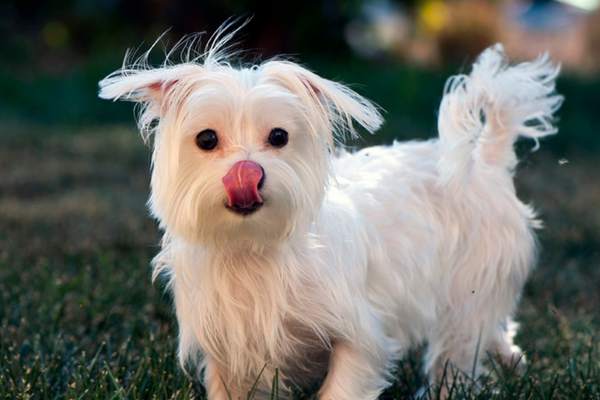
The Maltese have a medium-sized tail set high on its body and usually carried over the back in a graceful upward curl, resembling a plume, with the tip always lying to the side over the quarter. However, some individuals may have a more prominent tail curl than others, but this is in no way indicative of the breed’s temperament.
8. Well-Feathered and Fine-Boned Legs and Feet
The legs are slender with even feathering. Forelegs are straight, firm at the pastern joints, and lack noticeable curvature. Hind legs are well-developed yet moderately angled down to the stifles and hocks for stability.
They feature tiny round feet with dark toe pads that should be kept neatly groomed by trimming any scraggly hairs on them as needed. Their legs are also relatively short, making them look smaller than they actually are and giving the impression of a small lap dog.
9. Sweet and Affectionate Personality

A Maltese is a very affectionate breed, always ready to cuddle up close to its owner and shower them with unconditional love and loyalty. These dogs are known for their attention-seeking behavior, often following their owners from room to room in hopes of getting some extra snuggles and love. They love being around people and forming strong bonds with their owners and their family members.
10. Moves With a Confident, Smooth, Flowing Speed
The Maltese moves with a confident, swift gait that exudes agility and speed. Its light frame and slender legs allow it to move smoothly with a flowing style.
Running at a maximum speed of 5-18 mph, the Maltese can quickly move from one place to another and loves to run around the house, chasing after toys or running a lap around the garden, making it an ideal companion for active owners who love to take long walks or go on hikes.
11. Weak Jaw and Bite Force
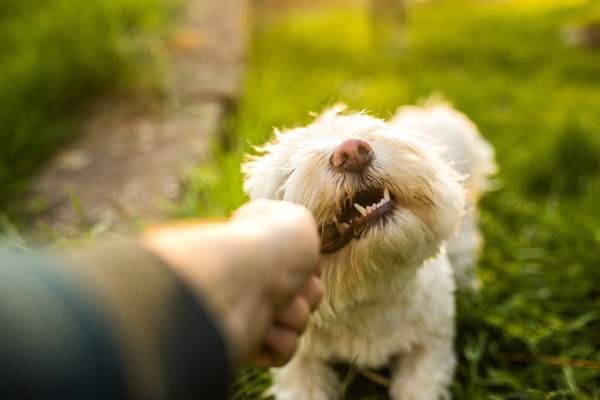
In the canine kingdom, the Maltese are considered the weakest biters due to their small size and lack of facial muscles. Their bite force is only around 100 and 200 PSI, making them unsuitable for certain activities such as agility or advanced obedience training. However, they are still capable of guarding the home and their owners if necessary, albeit in a much more gentle fashion than other larger breeds.
12. Very Stubborn and Willful
This dog is known for its strong-willed personality, often displaying an independent streak and challenging their owners with a stubborn attitude. As such, these dogs require consistent training, positive reinforcement, and patience in order to prevent them from becoming too willful or challenging to manage. If handled properly, however, they can be quite responsive and eager to please, making them a pleasure to own and interact with.
13. Territorial With High Guarding Instincts
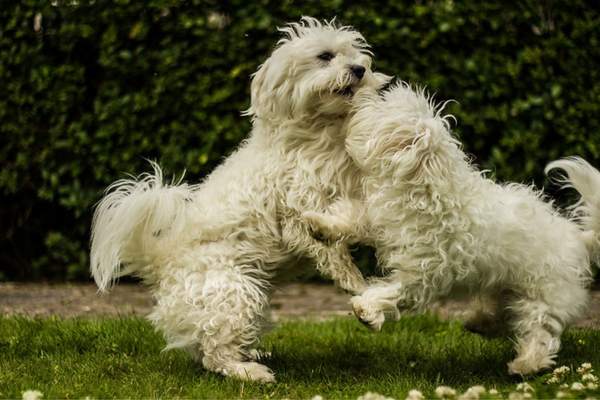
The Maltese is a territorial breed and will often guard its home, possessions, and family. It’s important to socialize your Maltese early on with other people and animals so it can learn to accept new guests into the home without feeling threatened or suspicious. With proper socialization, the Maltese can be very loyal and devoted to its owners, making it an ideal companion for those looking for a devoted and loyal guard dog.
14. Long-Lived For Its Size
The Maltese is considered a long-lived breed compared to other small dogs, with many individuals enjoying life well into their teens and beyond. With proper care, diet, exercise, and regular vet visits, your dog can live between 14-18 years, making it a great companion for years to come.
But remember, the key to keeping your canine friend healthy and happy is providing it with a balanced lifestyle and diet that meets its needs. With a combination of proper nutrition, exercise, socialization, and training techniques, your pup can enjoy life for many years as your loyal companion.
15. Hypoallergenic Coat

The Maltese is a hypoallergenic breed, which means its coat has minimal dander and sheds very little. This makes it an ideal choice for people with allergies, as long hair can trigger reactions in many individuals.
It’s important to note, however, that it should still be brushed regularly and groomed at least every 6-8 weeks to keep its coat looking its best. The dog’s hypoallergenic coat also makes it an ideal choice for people living in apartments or other close quarters, as it does not shed as much as other breeds and produces minimal odor.
16. They Have a Gestation Length of Around 60-64 days
The gestation length (or length of pregnancy) for these cute lap dogs is around 60-64 days, during which time its mother will gain 15-20% of her body weight. During this period, she will need a high-quality diet to ensure she maintains her health and is able to provide nourishment for her puppies.
After about nine weeks, the puppies should be ready to leave the nest and go to their new homes. Keep in mind that the females are often quite small and may require some extra help during labor, so it’s best to consult your vet if you plan on breeding.
17. Litter Size: 3-5 puppies
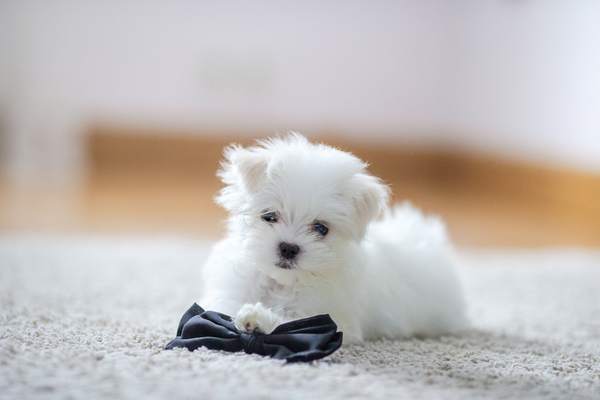
A female Maltese typically gives birth to 3 -5 puppies once a year. However, the size of the litter often depends on the dog’s age, health, and nutritional status.
In general, younger females tend to have larger litter than older ones, so it’s vital to ensure your dog is of the appropriate age before breeding. You should also be sure to provide your dog with a well-balanced diet and adequate exercise to keep her healthy and increase her chances of having a successful litter.

